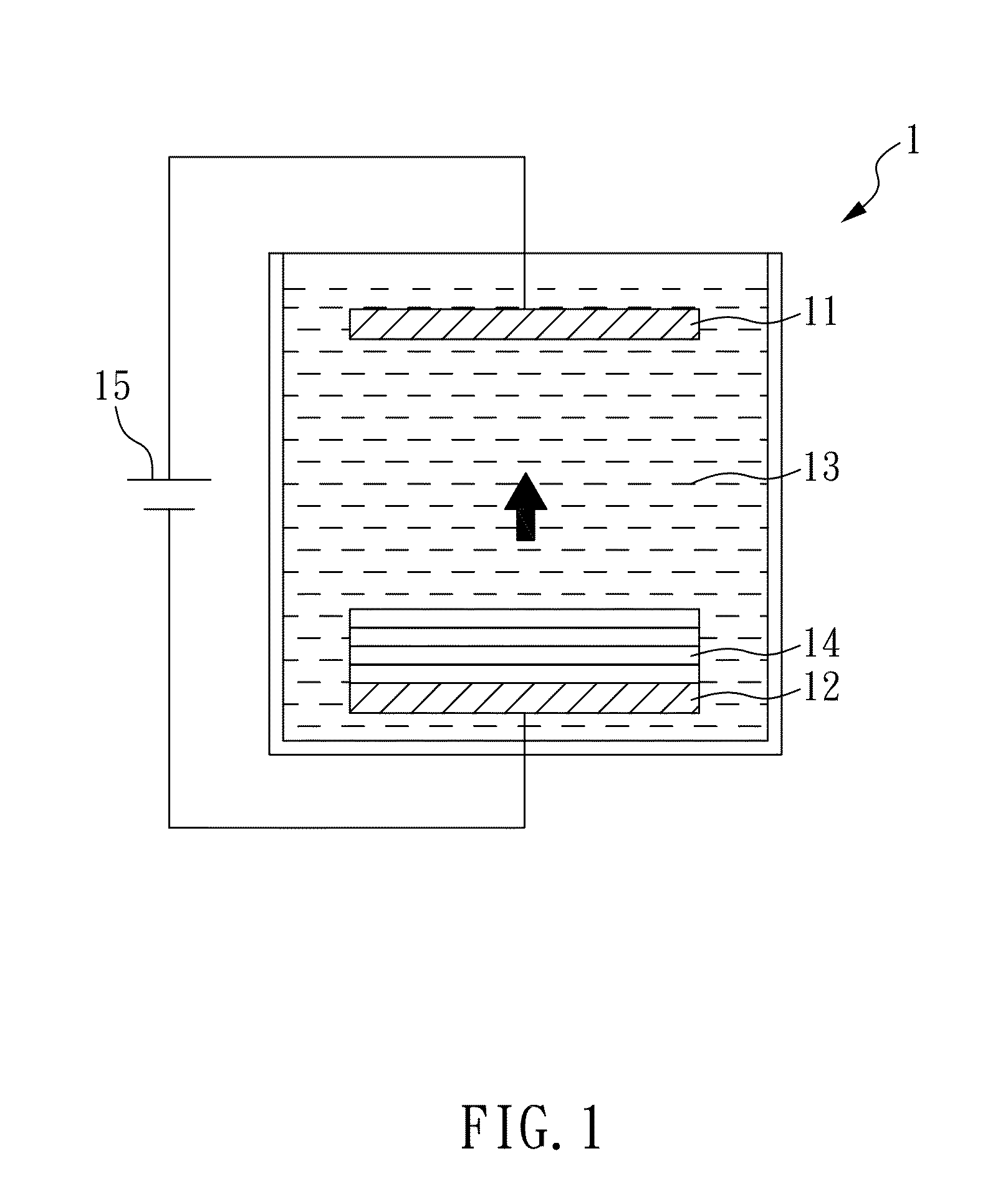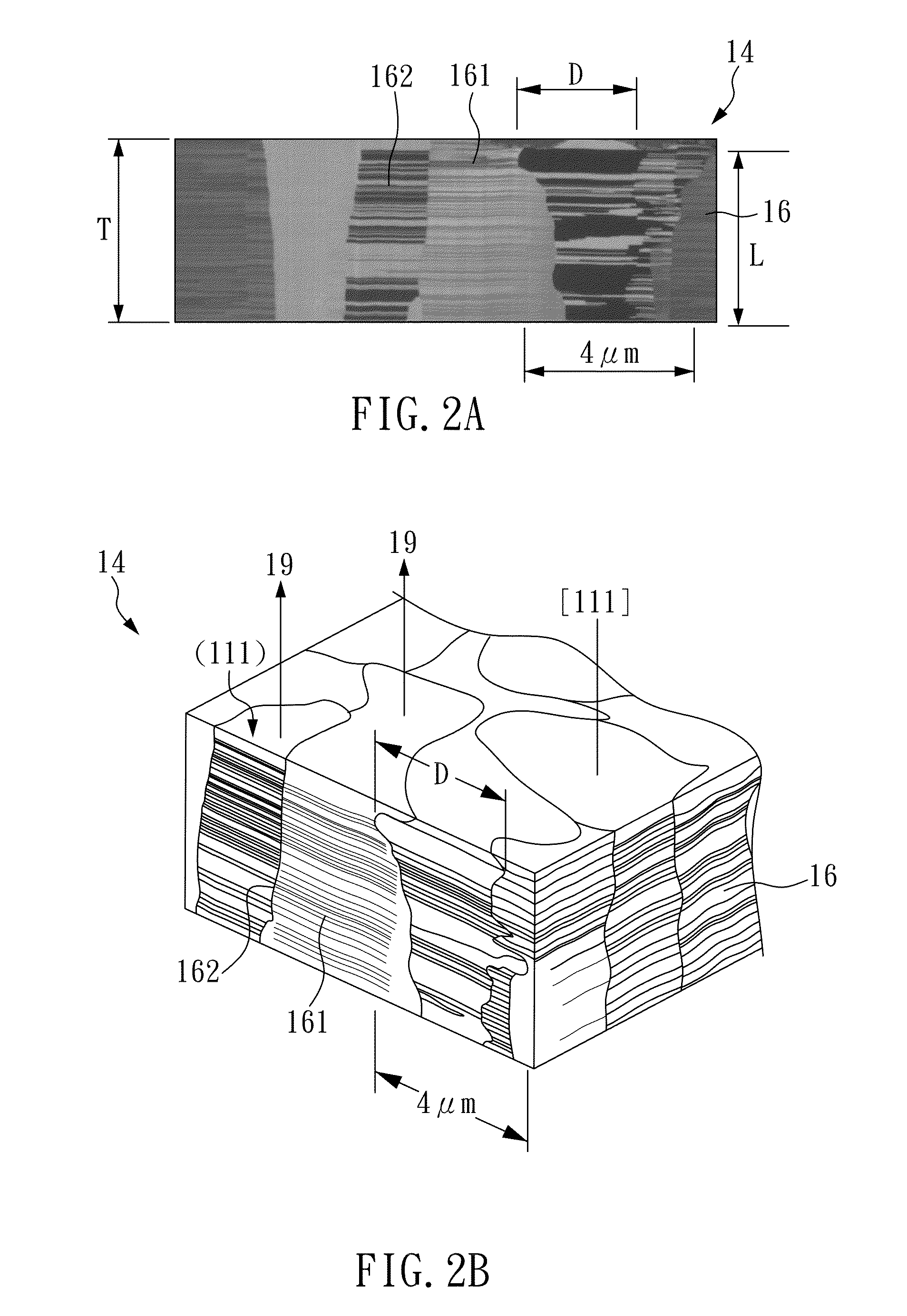Electrodeposited Nano-Twins Copper Layer and Method of Fabricating the Same
- Summary
- Abstract
- Description
- Claims
- Application Information
AI Technical Summary
Benefits of technology
Problems solved by technology
Method used
Image
Examples
example 1
[0059]An electrodepositing device 1 as shown in FIG. 1 is provided, the electrodepositing device 1 comprises an anode 11, a cathode 12, which are immersed in the plating solution 13 and are each connected to a direct current electrical power supply source 15 (Keithley 2400 is used herein). In the present case, the anode 11 is made from a material including metal copper, phosphorus copper or inert anode (for example, titanium-plated platinum); cathode 12 is made from a material including silicon substrate having its surface plated by copper seed layer, and can be made from a material selected from a group consisting of glass substrate having its surface plated by conductive layer and seed layer, conductive layer and seed layer plated surface glass substrate, quartz substrate, metal substrate, plastic substrate, or printed circuit board etc. The plating solution 13 comprises copper sulfate (copper ion concentration being 20-60 g / L), chloride anion (concentration being 10-100 ppm), and...
example 2
[0067]The combination of electrodepositing device and plating solution of the present example is the same as in Example 1, but pulse electrodeposition is used for plating instead of direct current power supply source. Silicon chip or solution is subject to rotation at a rate of about 0 to 1500 rpm. Ton / Toff is kept below 0.1 / 0.5 (sec), electric current density is kept at 50 mA / cm2, and twins copper is grown (plating 6000 cycles) from cathode moving toward the direction pointed by the arrow (as shown in FIG. 1). [111] plane of the twins is perpendicular to the orientation of electric field, and twins copper is grown at a rate of 0.183 μm / min. The fully grown twins copper comprises a plurality of columnar crystal grains; the columnar crystal grain has a plurality of layer-shaped nano-twins copper, and the thickness of the nano-twins copper layer obtained after electrodeposition is about 10 μm.
[0068]FIG. 9 is a cross-sectional focused ion beam (FIB) photo of the nano-twins copper metal...
example 3
[0070]The plating solution and method of the present example is the same as Example 1, but is different in an aspect that the current example has wire channel prepared by a semiconductor manufacturing process on the substrate surface, the micro through holes of the aspect ratio of 1:3, and that the nano-twins copper metal layer uses electrodeposition to fill holes and in turn forms interconnect.
PUM
| Property | Measurement | Unit |
|---|---|---|
| Fraction | aaaaa | aaaaa |
| Fraction | aaaaa | aaaaa |
| Fraction | aaaaa | aaaaa |
Abstract
Description
Claims
Application Information
 Login to View More
Login to View More - R&D
- Intellectual Property
- Life Sciences
- Materials
- Tech Scout
- Unparalleled Data Quality
- Higher Quality Content
- 60% Fewer Hallucinations
Browse by: Latest US Patents, China's latest patents, Technical Efficacy Thesaurus, Application Domain, Technology Topic, Popular Technical Reports.
© 2025 PatSnap. All rights reserved.Legal|Privacy policy|Modern Slavery Act Transparency Statement|Sitemap|About US| Contact US: help@patsnap.com



